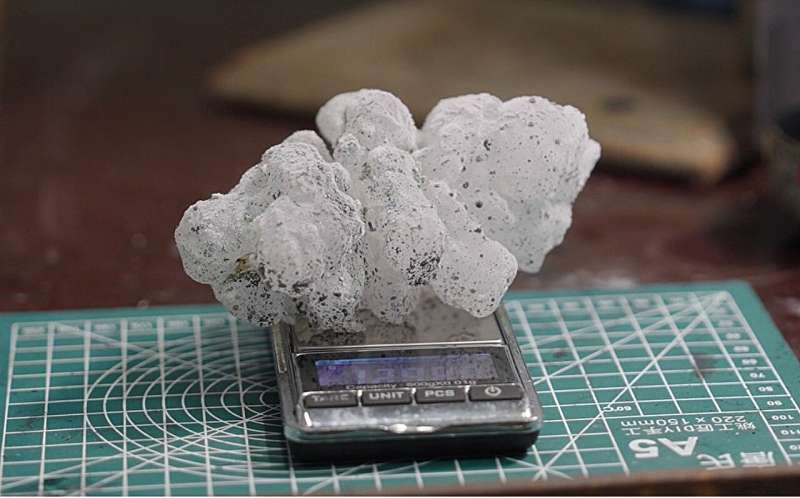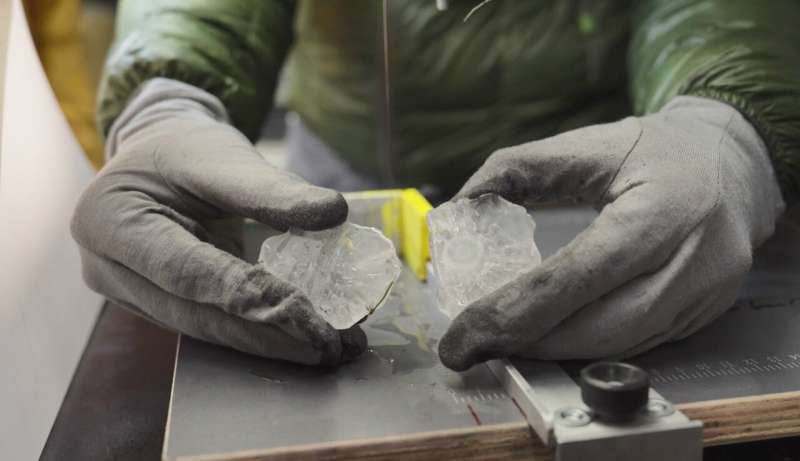This article has been reviewed according to Science X's editorial process and policies. Editors have highlighted the following attributes while ensuring the content's credibility:
fact-checked
trusted source
proofread
Hailstone library to improve extreme weather forecasting

A University of Queensland library—full of hailstones instead of books—is helping researchers to better understand and predict damaging storms.
Dr. Joshua Soderholm, an Honorary Senior Research Fellow from UQ's School of the Environment, and lead researcher Ph.D. candidate Yuzhu Lin from Penn State in the US, have found storm modeling outcomes change significantly when using real hailstones.
The research paper is published in the Journal of the Atmospheric Sciences.
"People tend to think of a hailstone as a perfect sphere, like a golf ball or cricket ball," Dr. Soderholm said. "But hail can be all sorts of weird shapes, from oblong to a flat disk or have spikes coming out—no two pieces of hail are the same.
"Conventional scientific modeling of hail assumes spherical hailstones, and we wanted to know if that changed when non-spherical, natural hail shapes are used."
Lin said they found the differences were dramatic.
"Modeling of the more naturally shaped hail showed it took different pathways through the storm, experienced different growth and landed in different places," Lin said. "It also affected the speed and impact the hail had on the ground. This way of modeling had never been done before, so it's exciting science."
Dr. Soderholm said building a 'hailstone library' was critical to further fine-tuning hailstorm simulations.
"This is effectively a dataset to represent the many and varied shapes of hailstones, to make weather modeling more accurate," he said.
"Our study used data from 217 hail samples, which were 3D scanned and then sliced in half, to tell us more about how the hailstone formed. This data is now part of a global library, as we try and get a really clear picture of hailstone shape and structure."

Dr. Soderholm said the research has significant potential. "At the moment, the modeling is specifically for scientists studying storms, but the end game is to be able to predict in real-time how big hail will be, and where it will fall," he said.
"More accurate forecasts would of course warn the public so they can stay safe during hailstorms and mitigate damage. But it could also significantly benefit industries such as insurance, agriculture and solar farming which are all sensitive to hail."
Dr. Soderholm is also a Research Scientist at the Australian Bureau of Meteorology. Some hail samples for the UQ data set were provided by Higgins Storm Chasing.
More information: Yuzhu Lin et al, Modeling non-spherical hailstones, Journal of the Atmospheric Sciences (2024). DOI: 10.1175/JAS-D-23-0231.1
Provided by University of Queensland



















